lambdastic
I heard you liked monads.
This was my 2nd favorite challenge out of this CTF. There may be some personal bias going on, as I am a huge fan of FP and Haskell in particular. I wouldn’t say this challenge was a walk in the park, but I can’t say I’ve struggled with it.
What the F are monads!?
Ah yes, the age old question no one can actually explain. I am not going to attempt it either, sorry. But no need to worry, the challenge itself isn’t actually that difficult. So let’s dive in!
First impressions
Once you open the binary in dnSpy and head over to the Main method, you will see that the program expects you to input some number, then it runs through this… 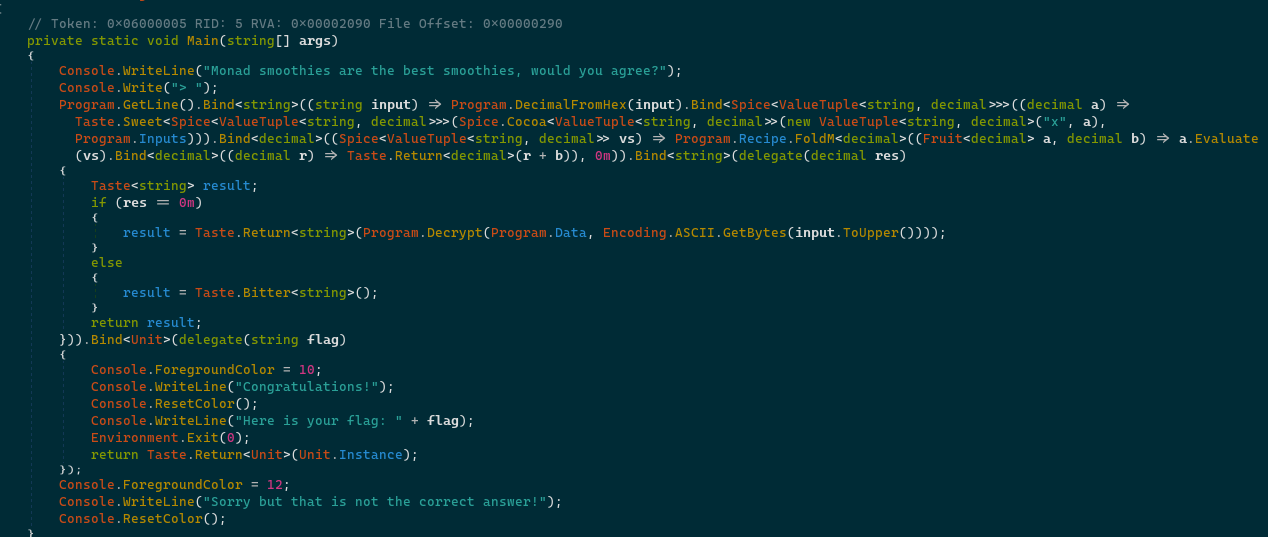 Wait wtf is this? Let’s just ignore that for now and assume this is some sort of “black box”. So after the input ran through that, it is used as an AES key to decrypt some data, which is probably the flag.
Wait wtf is this? Let’s just ignore that for now and assume this is some sort of “black box”. So after the input ran through that, it is used as an AES key to decrypt some data, which is probably the flag.
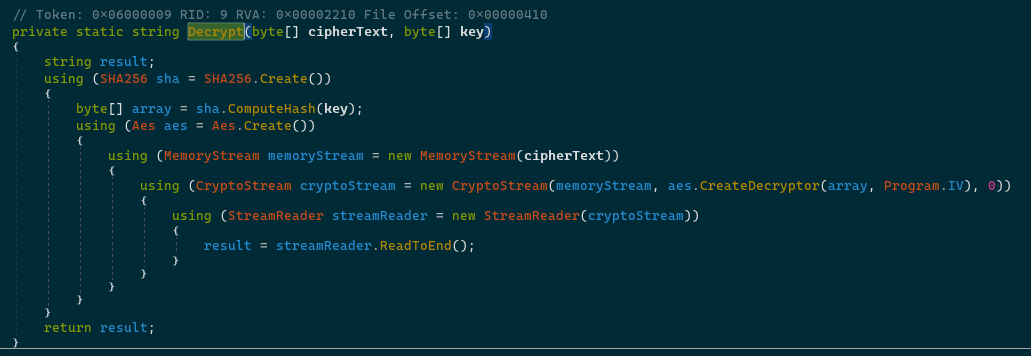
Uncovering the mystery
Looking at the “stuff” in the Lambdastic.Monads.* namespaces, we can see that there 4 “categories”, we are going to break them down in the order of easiest to hardest:
Unit
There is nothing special about this. It is basically like void, except it can be used as a “value” (in other words, it can be used as an expression).
Taste
Taste<T>: We can see that this class is used as the return value ofSafediv, and for me that made it instantly clear that this is theMaybemonad.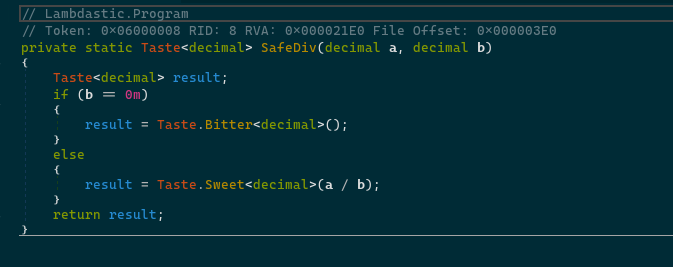
But I assume not everyone got it this quickly, so I am going to explain further. About the two methods:Bind: In layman’s terms, this basically “transforms”Taste<X>into some otherTaste<Y>, using a function that takes anXand returnsY.Map: Same thing asBind, but now the “transformer” function takesXand returnsTaste<Y>.
Bitter<T>: Notice how this class is a singleton (private constructor and a public static propertyInstance). Meaning this class is essentially stateless. And whatever method is called on it (Bind/Map), you get the same instance back.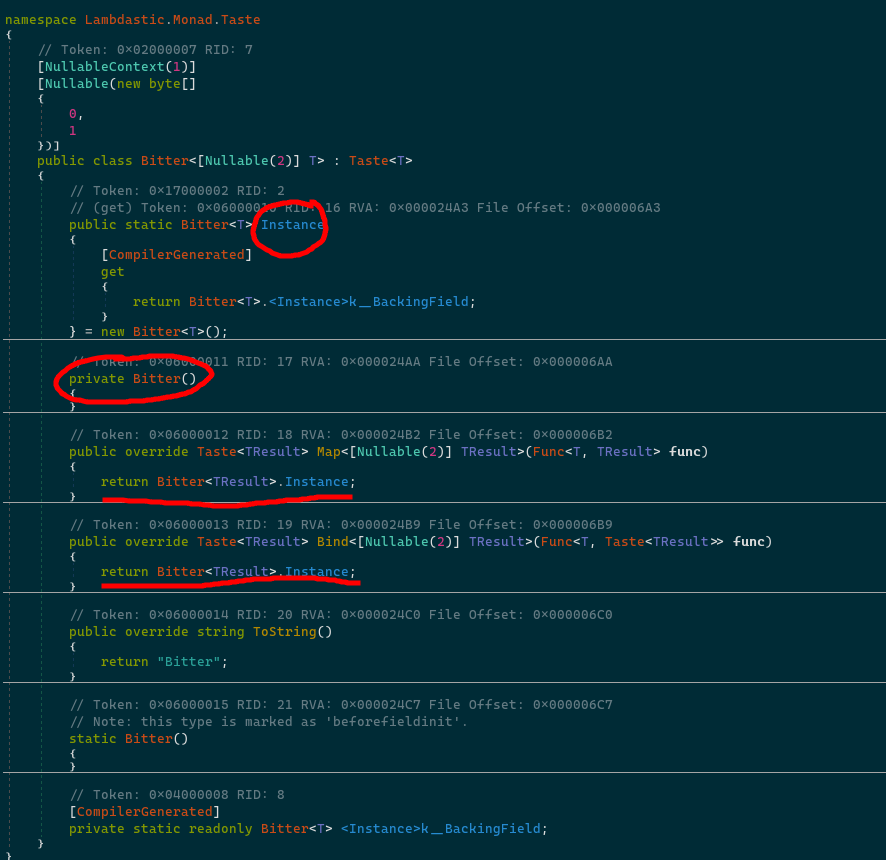
Sweet<T>: In contrast toBitter<T>, this is not a singleton class, it just wraps a value of typeT. Notice how the two methods (BindandMap) actually do something now, instead of just returning the same instance.
Taste: This is astaticclass that provides a few helper methods, they are not really important, they just provide a few shortcuts.
Spice
This is just a list implementation, but not an ordinary one. It is pretty much copied from Haskell, where lists are fully immutable and are “built from” heads and tails (they are more comparable to linked lists, than arrays). But again, I might have recognized this pretty quickly based on the name of the parameters of a helper method, but not everyone is familiar with FP.
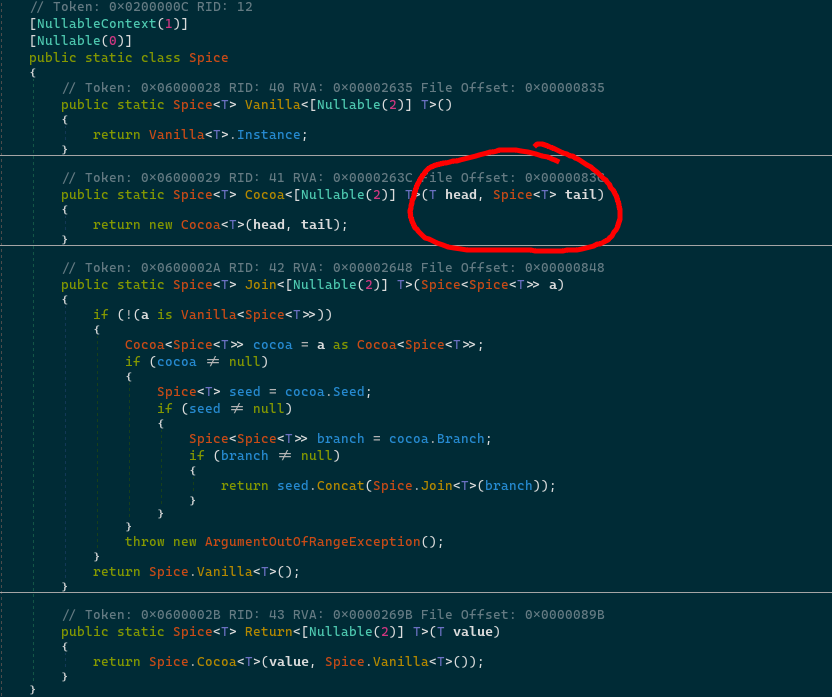
So let’s break this down, shall we?
Spice<T>: This is anabstractclass for our custom list implementation. It provides a couple of methods which will be important later.-
The
|operator: You see, in Haskell, you usually don’t index lists directly, but it is available and it looks like this:myList !! indexI guess the closest match was the
|character. We can see that this basically traverses the list, kinda like in a linked list.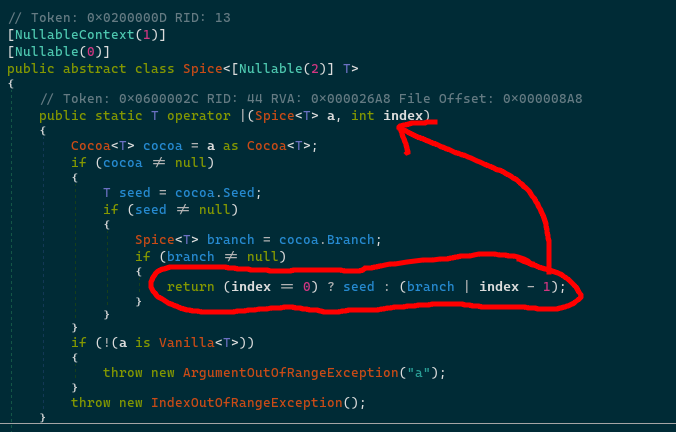
Map: Pretty much the same asMapfromTaste<T>, except this will traverse the list and apply the function on every item.Bind: Same story as withMapFoldM: This is an interesting one; this is basically the same asAggregatefrom Linq.
-
Vanilla<T>: This is basically an empty list. How can we tell? Well… if we take a look, this is also a singleton class (private constructor and a public static propertyInstance).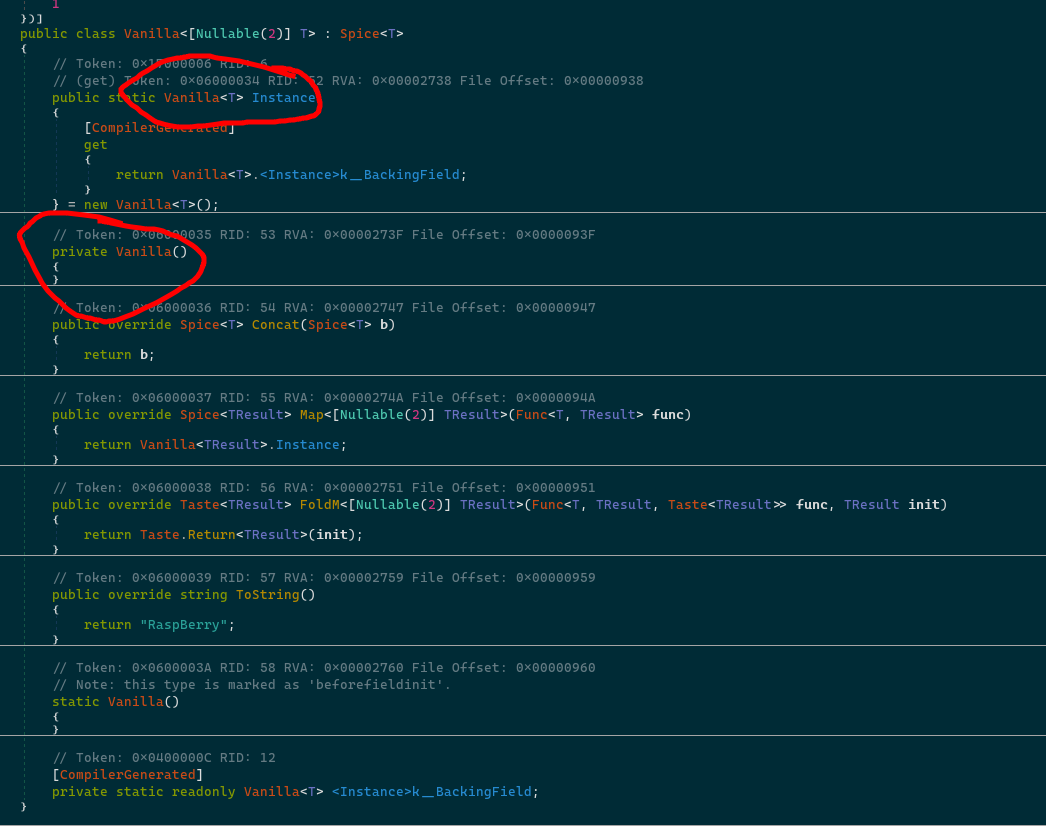
Cocoa<T>: This is the “main component”, this is where the heads and tails come together.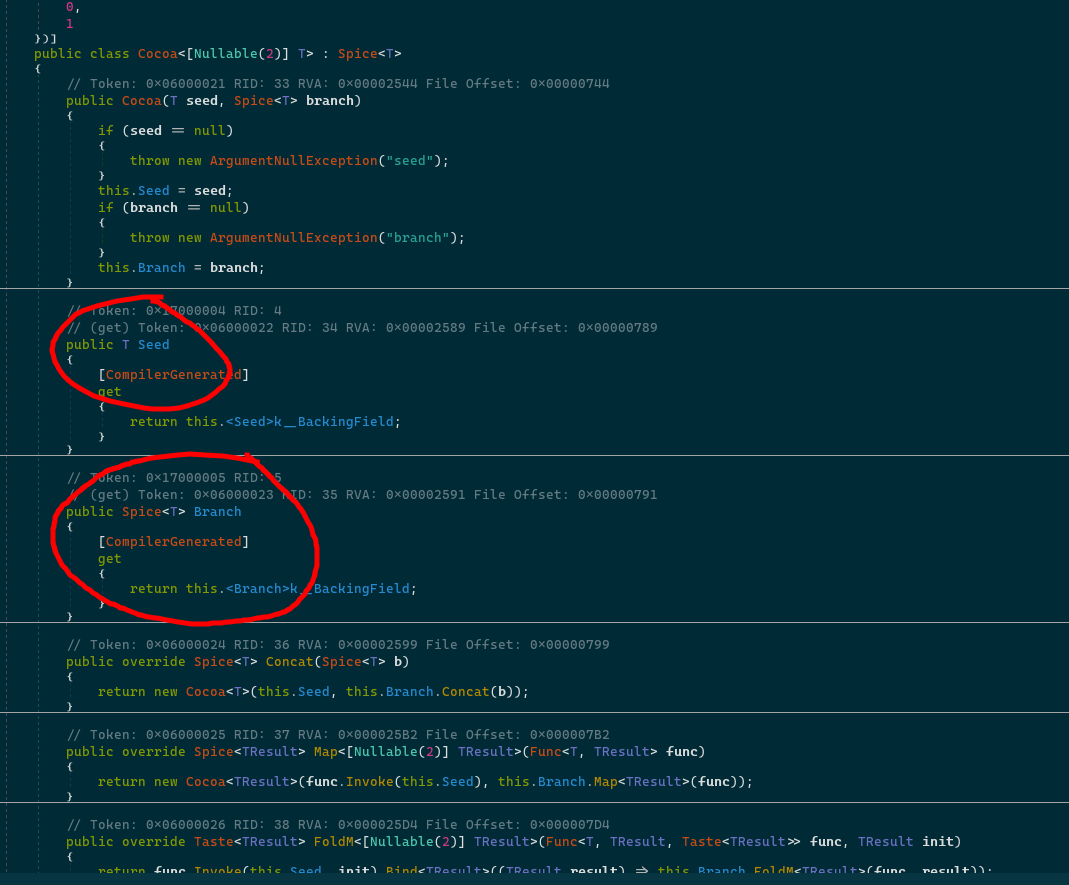
Spice: Some helper methods, they aren’t really important.
Fruit
This is a bit more complex, represents expressions. There are 5 types in this namespace, so let’s break it down;
Fruit<T>: This is anabstractclass which just defines anEvaluatemethod which takes in a list of “variables” in the form of a(name, value)tuple.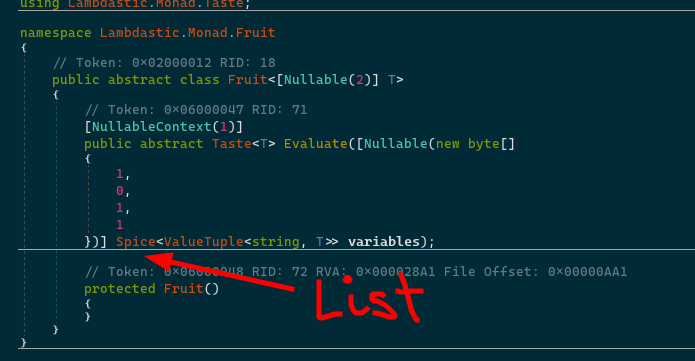
Apple<T>: Just wraps a value of typeT, think of it like a “literal” in the expression tree.
Banana<T>: This is the variable expression in the expression tree. We can deduce this by looking at itsEvaluatemethod implementation.
It loops over the list of variables in the evaluator and tries to find the value associated with theName.StrawBerry<T>: Last, but definitely not least, we have this bad boi. This is nothing else, but a function call expression! We can see it by just inspecting the names.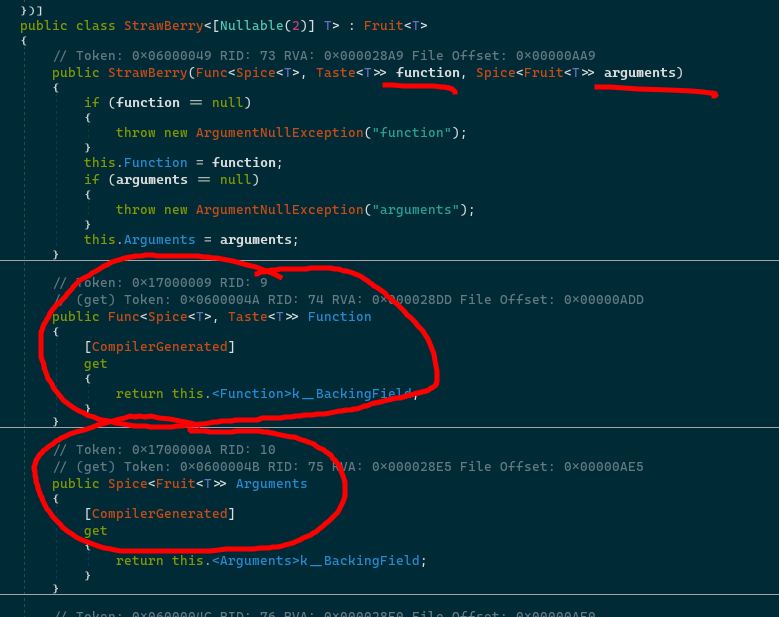
And then looking at theEvaluatemethod, we can see that it evaluates all of theArguments and then calls theFunction: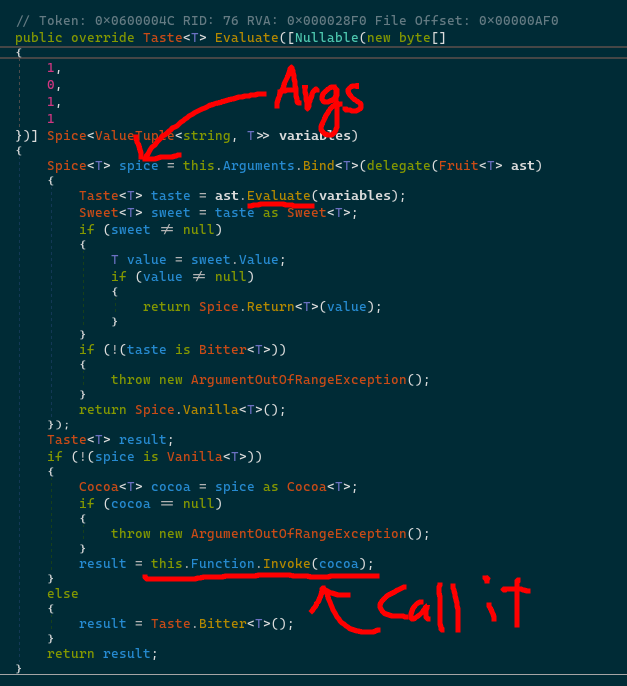
Whew, where were we?
Ah right, let’s now dissect the “black box”!